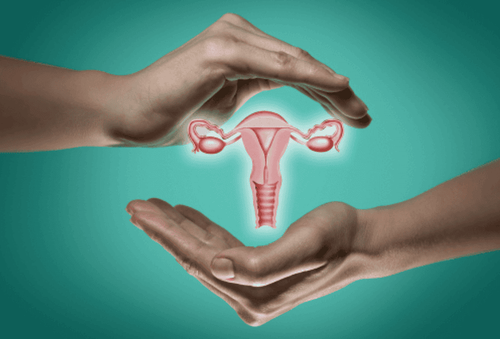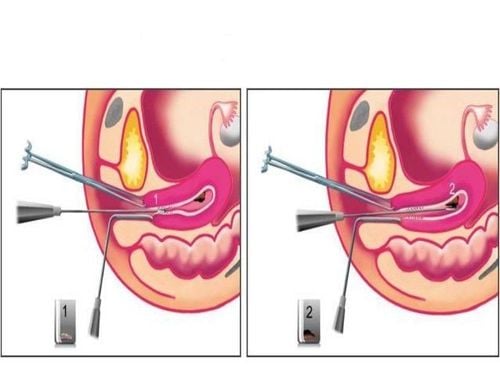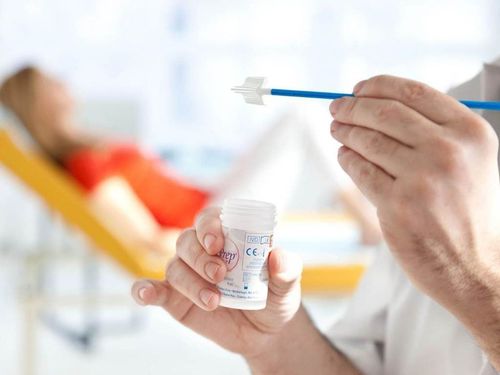This is an automatically translated article.
Thanks to hysteroscopy, many diseases in the uterus have been detected and diagnosed accurately and safely, bringing high treatment efficiency to patients.1. What is hysteroscopy?
Diagnostic hysteroscopy is a very common procedure used to diagnose pathologies related to a woman's uterus. This is a procedure that uses a small laparoscope with a light and camera to enter the uterus through the vagina and then transmits the received image signal to the main screen, through which the doctor will identify the uterine cavity. Whether the bow is damaged or not, where is the injury, if possible, it will be combined with other tools to treat the lesions.
Hysteroscopy is a non-invasive procedure, without surgery, so it limits pain and discomfort in the patient.
Hysteroscopy without surgery, limited pain and discomfort, quick recovery, early discharge from the hospital, no impact on daily life.
2. Role of diagnostic hysteroscopy
Diagnostic hysteroscopy is usually performed after conducting tests such as ultrasound, X-ray... to help diagnose more accurately the pathologies in the uterine cavity.
Diagnostic hysteroscopy is indicated to:
Find out the cause of abnormal bleeding in women past menopause Find out what makes it difficult to conceive in the uterus Diagnose the cause cause of 2 or more consecutive miscarriages in women Although quite common, diagnostic hysteroscopy is contraindicated in the following cases:
Patient has cervical stenosis Pregnant Contraindicated Indications for general anesthesia
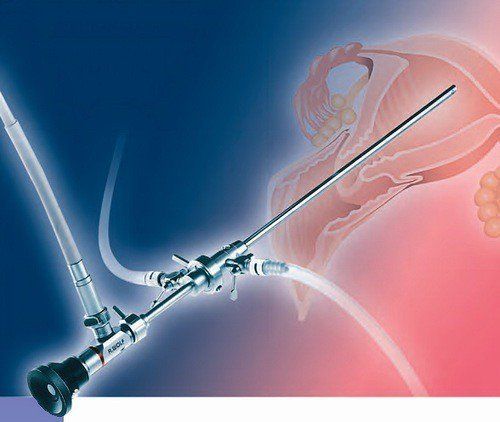
Nội soi buồng tử cung có vai trò quan trọng trong chẩn đoán bệnh lý phụ khoa
3. Diagnostic hysteroscopy procedure
Diagnostic hysteroscopy is a procedure that is performed quite quickly at the doctor's office or at the hospital. Before the laparoscopy is performed, the patient will be given a drug (possibly a drug that causes cancer). local anesthetic or general anesthetic) to help relax and reduce discomfort.
To ensure accurate and safe results, the doctor can easily observe the lesions in the uterine cavity, the patient will be performed a diagnostic hysteroscopy on the day of the menstrual period. The steps of colposcopy are as follows:
Step 1: The doctor dilates the patient's cervix before performing the procedure. Step 2: Insert the speculum into the vagina first and then insert the endoscope through the cervix into the uterine cavity, a gas called carbon dioxide or a liquid, such as physiological saline, will be injected into the catheter. through the laparoscope to help dilate the uterus and give the doctor a clearer view of the endometrium. Step 3: The doctor observes the endometrium and the tip of the fallopian tube through the laparoscope. After laparoscopic examination of the uterus, if the patient is under general anesthesia, he must be kept until the anesthetic wears off before he can go home. You may experience mild cramping or light bleeding for a few days after the procedure. In case of malaria, severe bleeding, you must immediately contact your doctor for a timely treatment plan.
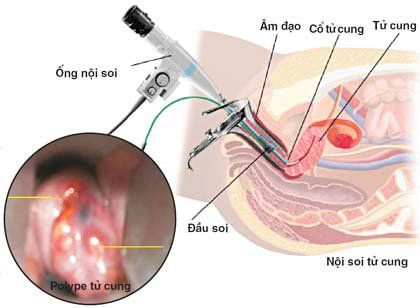
Nội soi buồng tử cung là thủ thuật được thực hiện khá nhanh chóng và an toàn
4. Does diagnostic hysteroscopy carry any risks?
Diagnostic hysteroscopy is a safe procedure, however, in some special cases, the patient may experience some complications such as the uterus or cervix can be perforated due to the tube. endoscopy, causing heavy bleeding or fluid retention in the body.
Patients should walk, exercise gently for about 6 - 12 hours performing endoscopy. To ensure safety and not cause complications, hysteroscopy should only be performed when there is no pregnancy, no genital infection, and no allergy to substances that stretch the uterus.
Please dial HOTLINE for more information or register for an appointment HERE. Download MyVinmec app to make appointments faster and to manage your bookings easily.







